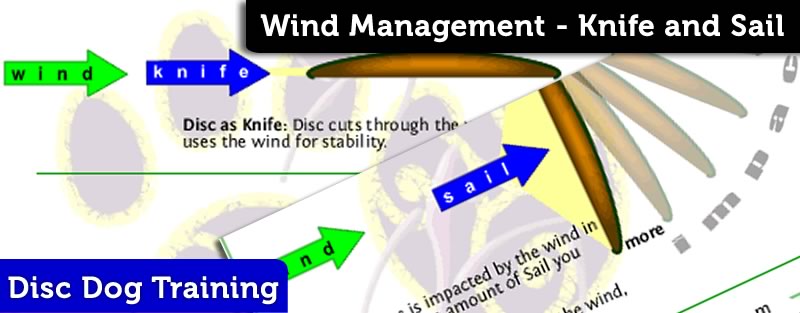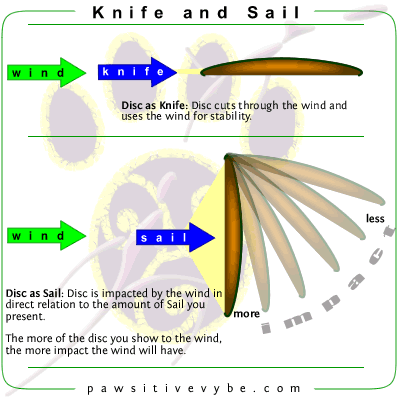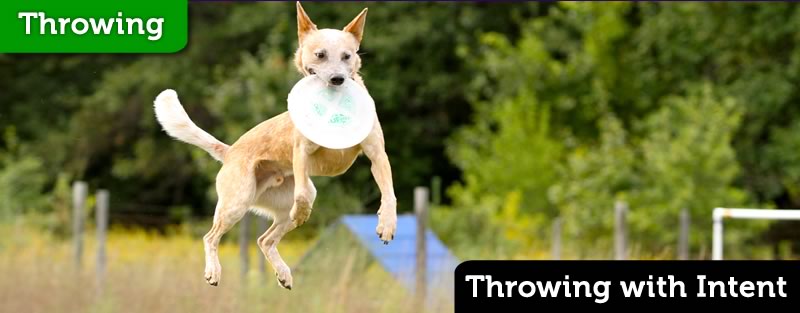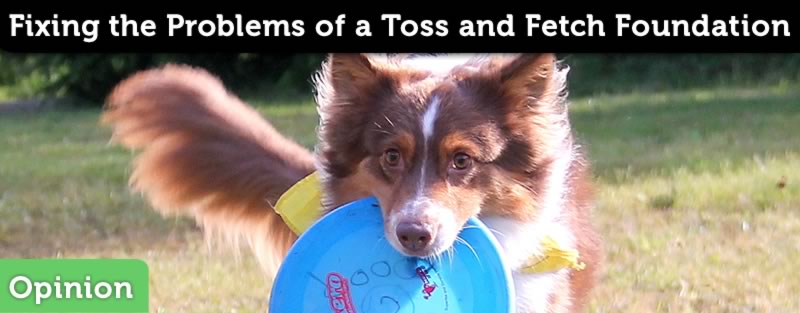
Wind Management – Knife and Sail

The Knife and the Sail
A disc in the wind can act either as a knife or a sail, and often does both at the same time. When a disc acts as a knife, it cuts through the wind and holds its position. The wind has very little effect on its flight. In order for the disc to act as a knife, there must be sufficient spin Spins and Twists are tricks where the dog spins 360 degrees in a clockwise or counter clockwise fashion. Spin is clockwise and Twist is counter clockwise so it is important to have a... More, and the rim must be the first part of the disc to be affected by the disc. When a disc acts as a sail, the wind impacts it dramatically. The wind pushes it, sometimes drastically, downwind. For a disc to act as a sail, the top or bottom of the disc faces the wind, providing a large surface area, a sail, for the wind to push around.
Spins and Twists are tricks where the dog spins 360 degrees in a clockwise or counter clockwise fashion. Spin is clockwise and Twist is counter clockwise so it is important to have a... More, and the rim must be the first part of the disc to be affected by the disc. When a disc acts as a sail, the wind impacts it dramatically. The wind pushes it, sometimes drastically, downwind. For a disc to act as a sail, the top or bottom of the disc faces the wind, providing a large surface area, a sail, for the wind to push around.
To Throw into the wind or Downwind?
This is a complicated question, and has a complicated answer, and there is a different answer for different dogs and throwers, and the end result desired. At its most basic level, a disc thrown into the wind tends to hover more, leaving your dog more time to get under it, and a disc thrown downwind tends to fall faster, leaving your dog less time to get under it. While it is possible for a dog to leap well for both upwind and downwind targets, any extreme, too much time, or too little time, will harm your dog’s pretty leap. Hang it up there too long, and your dog will wait for it to come down, get it out too far, and your dog must continue to run to make the grab; no big leap. Once we take the basics into account, we have other variables to consider: the thrower’s skill level, the dog’s speed and tracking ability, distances being thrown, crosswinds, swirling winds, etc. We’ll hit on a couple of these things real quick then give a few suggestions for helping you, personally, with your wind management.
Throwing into the wind
Throwing into the wind is usually more challenging from a thrower’s perspective. Not only does the wind make your throws shorter, but it also exaggerates mistakes that are made in the delivery of that throw. If you curve it just a bit to the left, add wind, and that little curve can take your disc 30 yards off target. If you throw a bit too high, the disc might wind up behind you. If you don’t have enough spin, your disc will wobble. The best way to deal with a strong headwind, from a throwers perspective, is to make sure your throwing skills are solid. That means practice.
Throwing Downwind
Throwing downwind is considerably easier for most everybody. Mistakes are not multiplied by the addition of wind on the wing of the disc. Small mistakes will be corrected and lessened because the disc is being pushed along by the wind. As long as there is a decent amount of spin, the disc will cruise along quite nicely. Experienced and new players will find that throwing downwind increases distance drastically.
The problem with throwing downwind is that the disc doesn’t hover well. It sinks to the ground either slowly over a long distance or the bottom drops out and it falls rapidly to the ground. Throwing downwind almost guarantees that your dog will not jump for the frisbee. A history of throwing down wind is a good way to create a ground bound hound.
Know your dog
Is your dog good at tracking? Is he slow? Is he a real speed demon? Does he finish well? Does he tend to leap early? These things are very important when figuring out what wind direction you need to throw in. An honest evaluation of your dog’s ability will help lots in having successful wind management.
Observe, Think and Take Notes
Notecards are a great tool for figuring out how the wind affects your throwing, and for building a windproof routine. Get a stack of notecards and put your tricks on them. When you notice a real strange effect due to the wind, make note of it, and put it on your card. This will help set the knowledge in your head, and will give you tons of intelligence when you are developing or changing your routine. I use 12 o’clock, 3 o’clock, 6 o’clock, and 9 o’clock as my basic notation. Once we understand the effects of the wind on each of our tricks, then we can easily create a routine that is functional even in high wind.








